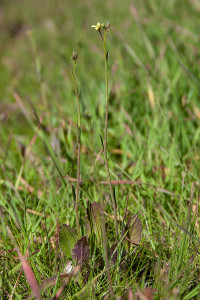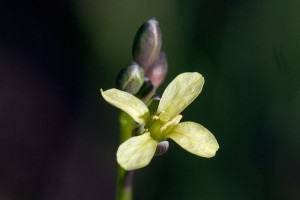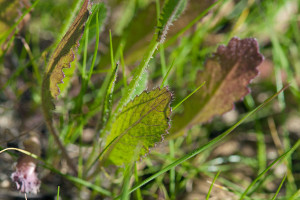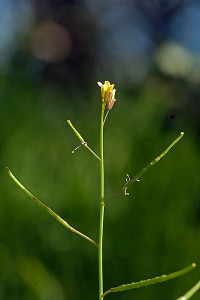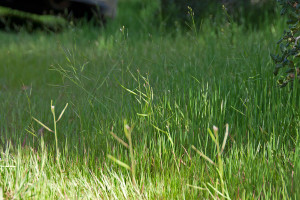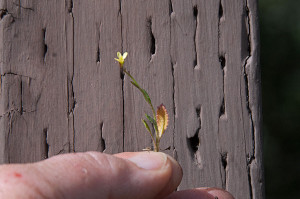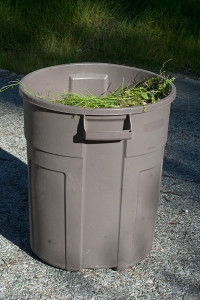Last year we spotted the very nasty Sahara Mustard (Brassica tournefortii) in the Foothill Blvd parkway at the BFS. We have been keeping our eyes out for any that might spring up this year, but we almost overlooked them. Instead of being large plants with a typical open bushy appearance, this year’s Sahara Mustard plants are unbranched, spindly, and very small.
Nontheless they could be recognized as Sahara Mustard by the pale yellow flowers…
…hairy leaves and stems…
…and especially the long beaked fruits (“siliques”) borne on pedicels.
Although last year’s Sahara Mustard plants were confined to the parkway outside the BFS fence, we found some this year inside the fence. Their sticky seeds would appear to have been tracked in through the pedestrian gate, where they were hard to spot among the grass.
On Saturday, February 16, a crew of volunteers removed all the Sahara Mustard they could find, although finding them wasn’t easy. Some of these sneaky little plants were flowering and bearing fruit when they were no more than two inches tall.
Even though the plants were small, the volunteers pulled enough of them to nearly fill a large garbage can!
Thanks to all the volunteers for a great job! We will clearly we need to keep an eye on this invasive mustard in the future.
